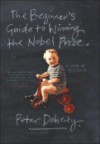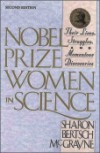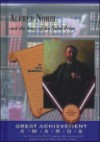|
Books
Nobel Prize and More
 The Beginner's Guide to Winning the Nobel Prize The Beginner's Guide to Winning the Nobel Prize
Peter Doherty
Columbia University Press; May 2006
In The Beginner's Guide to Winning the Nobel Prize, Doherty recounts his unlikely path to becoming a Nobel Laureate. Beginning with his humble origins in Australia, he tells how he developed an interest in immunology and describes his influential work with Rolf Zinkernagel on T-cells and the nature of immune defense. Doherty reveals how his nonconformist upbringing, sense of being an outsider, and search for different perspectives have shaped his life and work.
 Nobel Prize Women in Science Nobel Prize Women in Science
Sharon Bertsch McGrayne
National Academies Press; February 2001
In Nobel Prize Women in Science, Sharon Bertsch McGrayne explores the reason for this astonishing disparity. She does so by examining the lives and achievements of 14 women scientists who either won a Nobel Prize or played a crucial role in a Nobel Prize-winning project. It tells the dramatic stories of the relentless discrimination these women faced in universities, both as students seeking a scientific education and as researchers who wished to make their careers in scientific study and discovery. Their accomplishments were due to two factors: they were in love with science itself and were passionately determined to succeed.
 Alfred Nobel and the Story of the Nobel Prize Alfred Nobel and the Story of the Nobel Prize
John Bankston
Mitchell Lane Publishers Inc.; June 2003
This biography includes explanations of what motivated these individuals to create awards that would honour achievers for generations to come. Bankston presents an interesting look at the life of Alfred Nobel, and the odd incident (reading his own obituary) that made him consider the legacy he wished to leave-he did not want to be remembered only as the inventor of dynamite and a "merchant of death". The book is concise and well - organised, providing enough information, but not enough depth to make them truly engaging. However, the author tends to make subtle assumptions about his subjects' feelings and reactions without citing sources. The full-colour photos and reproductions are well-printed.
Compiled by SANYAT SATTAR
Copyright (R) thedailystar.net 2006 |
